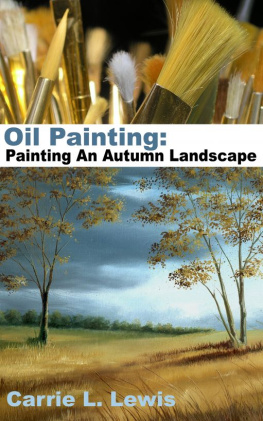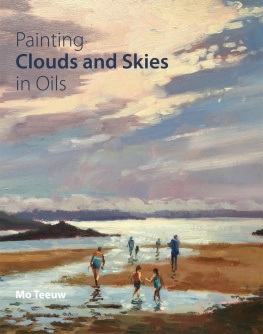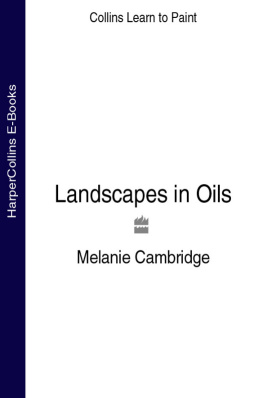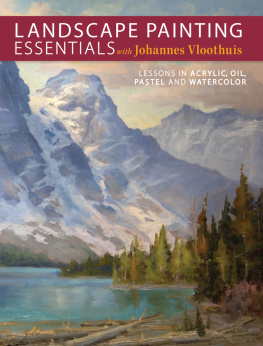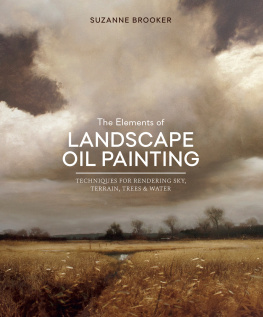Painting Landscapes

Painting Landscapes
Kevin Scully

THE CROWOOD PRESS
First published in 2018 by
The Crowood Press Ltd
Ramsbury, Marlborough
Wiltshire SN8 2HR
www.crowood.com
This e-book first published in 2018
Kevin Scully 2018
All rights reserved. This e-book is copyright material and must not be copied, reproduced, transferred, distributed, leased, licensed or publicly performed or used in any way except as specifically permitted in writing by the publishers, as allowed under the terms and conditions under which it was purchased or as strictly permitted by applicable copyright law. Any unauthorised distribution or use of this text may be a direct infringement of the authors and publishers rights, and those responsible may be liable in law accordingly.
British Library Cataloguing-in-Publication Data
A catalogue record for this book is available from the British Library.
ISBN 978 1 78500 384 4
Frontispiece: From Beacon Hill, Kevin Scully, oil on board, 12 10. An oil sketch, painted en plein air, in preparation for a larger painting to be produced later in the studio.
Contents

Introduction
When you go out to paint, try to forget what objects you have before you, a tree, a house, a field or whatever. Merely think here is a little square of blue, here an oblong of pink, here a streak of yellow, and paint it just as it looks to you, the exact colour and shape, until it gives you your own nave impression of the scene before you.
CLAUDE MONET

Vapour Clouds at the Power Station, Kevin Scully. (12" 10", oil on board)
The water vapour emitted from the chimneys at this power station takes on some spectacular colours, depending on the atmospheric conditions and the colour of the sky at certain times of the day. To obtain the full impact of this, the chimneys are best viewed from a distance. The white area at the bottom of the painting could be mistaken for snow, but is in fact several acres given over to growing papaver somniferum, the opium poppy used in the pharmaceutical trade. The choice of contrasting colours orange and blue used in this image add a sense of drama to the unusual subject matter.
A ll painting is an illusion. When we produce a painting, we are attempting to recreate the sensation experienced when viewing something in three dimensions, into a two-dimensional representation. The physical process of applying paint to a support is something that will always be totally unlike creating an image by any other mechanical or digital means. It is deep in our DNA to want to make symbols of those things that we see around us by using an ancient physical process. Ever since Homo sapiens began making representational marks on cave walls, we have been striving to do the same in ever more sophisticated ways. It is a means of self-expression, together with the need to communicate with others that which we see around us.
For painters, the click of a button and the manipulation of the photographic image will never be enough to satisfy the desire to reproduce what he or she experiences when being confronted with the complexities of nature. Why do we bother to paint the landscape, when we can far more easily photograph it? There are many obstacles to overcome, and the methods employed in translating what we see into a painting are countless and sometimes tortuous. But it is this journey that we make, with all of its complications and twists and turns, that gives the most satisfaction. It is something that has to be worked at, to be fretted over and eventually to be honed into the finished article that actually makes a statement about why we chose the subject in the first instance.

The Old Bridge at Carcassonne, David Sawyer. (16" 24", oil on board)
Contre-jour, or painting against the light, is an excellent way of working, especially if you want to avoid getting bogged down in too much detail. The complex architecture of the medieval city and bridge has been reduced almost to a silhouette. The large, dark tree on the right gives a degree of cohesion to the whole composition and keeps the attention focused in the centre of the picture. The whole painting was completed in less than three hours, and all painted on the spot. With a minimum of brushwork and a limited colour range, the artist has produced a very successful and convincing painting. When in doubt, it always pays to keep it simple!

High Oaks Farm, Deborah Tilby. (18" 18", oil on board)
Subjects such as this are fun to paint all the paraphernalia that is found in a farmyard has been painted loosely and without any definition, merely suggesting what it all might be rather than actually stating it. The large, fairly plain expanse of yellow/green field on the right of the painting creates a strong design element. The narrow strip of foliage and fence on the left divides the composition vertically, and this has been counterbalanced by the road on the right. The scene is backlit with simple clouds painted with very little detail, but just sufficient to suggest the backlighting. The warm, golden colour with which the board has been prepared has been allowed to peek through in certain areas, which unifies the whole painting.
There are often underlying patterns and arrangements in the landscape that appeal to us in a subconscious way, and it is by understanding and analysing these systems that we can begin to reproduce an image that appeals to us. However, by simply basing our paintings on long-established rules, and underpinning them with trusted compositional structures, we will only be able to tell half the story. But there are no limitations when it comes to using our imagination and desire to reproduce in paint that which initially inspired us.
But there are limitations to what can be reproduced using just paint. For example, its impossible to replicate the brilliance of pure light by simply placing pigment on canvas, but by employing certain devious means, the sensation can be simulated by the manipulation and juxtaposition of colour in its various tones.
Not everything in nature is perfect, and just because something is there, it doesnt necessarily mean we have to reproduce it exactly as we see it. A few adjustments might have to be made when translating the natural world into an agreeable composition. The challenges set by nature are immense and complex, and ultimately the way in which we represent them as painters is an individual one. We should strive to look beyond simply copying what we see, and instead we should attempt to make a statement about the sensation that drove us to paint that particular scene in the first place.

Village Laundry, Kerala, Kevin Scully. (20" 27", oil on board)
Next page



